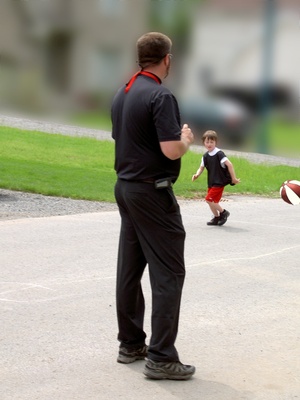
Overview
Soccer coaching is a demanding but rewarding task. Soccer training sessions have a huge impact on the development of individual players and on the performance of the soccer team as a whole. As a soccer coach, you should plan your training sessions in advance and prepare thoroughly. During a soccer training session, stick to your plan and avoid going off topic with either your activities or your coaching points. Keep a positive and energetic approach while delivering your session plan.
Step 1Plan a specific topic to cover in your soccer training session. It is important to cover one topic in detail rather than skim over two or three different topics. A soccer training session typically lasts for 90 minutes, and it is better for the learning process of your soccer players if you stick to a single, specific topic and cover it throughout your session plan. Examples of topics include dribbling, passing, shooting and defending.
Step 2Maintain a high energy level throughout your soccer training session. Avoid down time, and incorporate a number of brief water breaks between teaching blocks that do not interrupt the flow of your session. Ensure that your training session plan is detailed and breaks the session down into blocks of time. If you go slightly over to cover a coaching point, that is fine, but avoid finishing early as dead time may accumulate and leave you at a loose end later in the training session. Lead by example with an enthusiastic voice and upbeat, energetic body language throughout the soccer training session.
Step 3Deliver two or three specific coaching points and repeat them throughout the session. Repetition is a powerful learning tool, so repeat your coaching points every 10 minutes for the message to sink in with every player. Coaching points in a dribbling session, for example, can include reminders to keep the ball close, look up between touches and dribble away from defensive pressure. Have these coaching points make up the core of your training session plan.
Step 4Increase the difficulty of the skill being taught progressively throughout the session. Resistance should begin at none, work its way up through the stages of active and passive, ending with full game resistance. For example, when practicing dribbling, begin the session teaching the coaching points with no defensive pressure. Passive resistance can be avoiding stationary objects such as a cone or pinnie; active resistance could be defenders pressuring but stopping short of winning the ball; and full defensive pressure could be dribbling against a defender, making every effort to take the ball away.
Step 5Condition your scrimmage to emphasize the coaching points covered in your training session plan. For example, in a dribbling session, award five points for a goal and one point every time an attacker beats a defender off the dribble. Always end the scrimmage by lifting the conditions and letting the team play.


